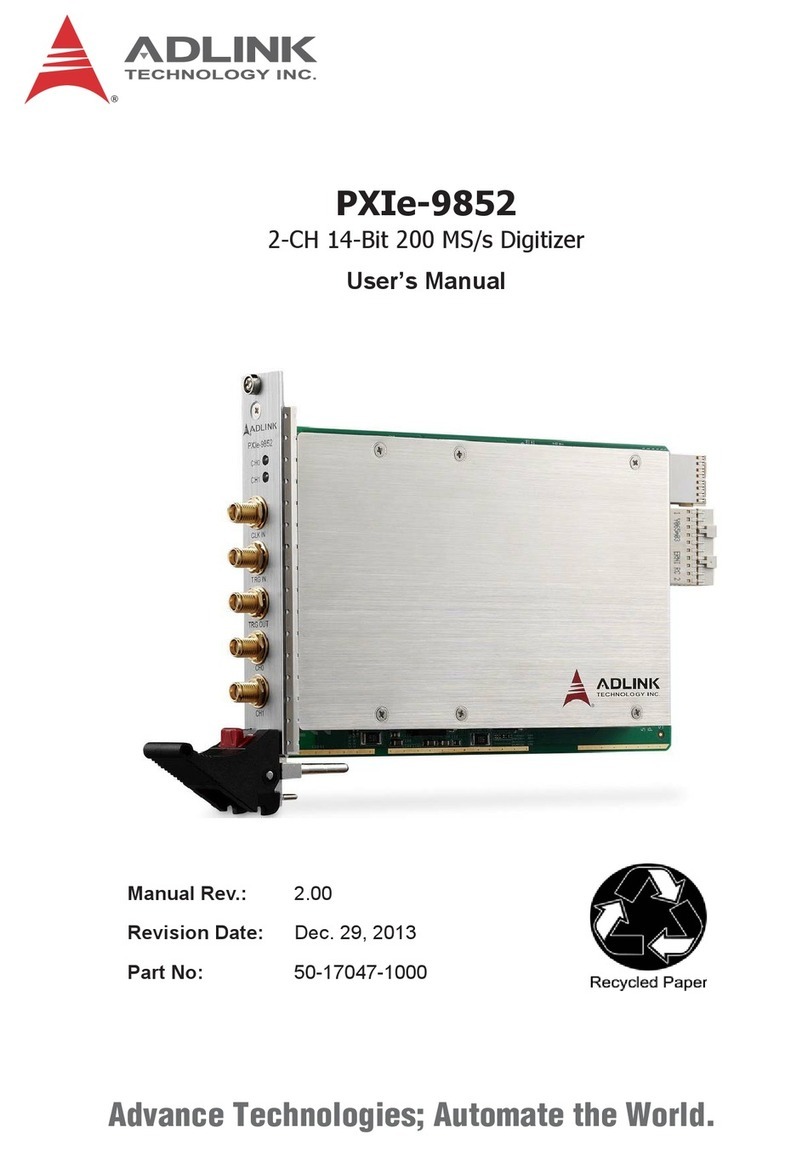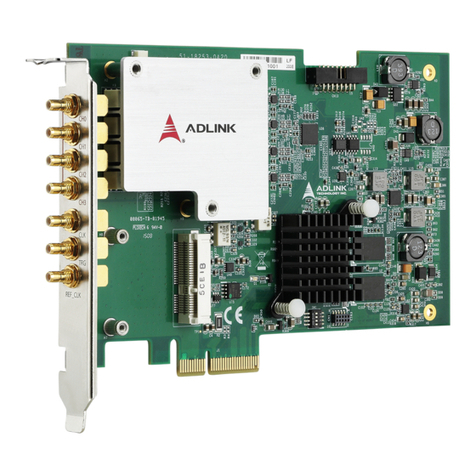
viii Table of Contents
Leading EDGE COMPUTING
3.1 Functional Block Diagram .................................................. 23
3.2 Analog Input Channel ........................................................ 23
3.2.1 Analog Input Front-End Configuration ...................... 23
3.2.2 Input Range and Data Format .................................. 24
3.2.3 DMA Data Transfer...................................................26
3.3 Trigger Source ................................................................... 27
3.3.1 Software Trigger ....................................................... 28
3.3.2 External Digital Trigger ............................................. 28
3.3.3 Analog Trigger .......................................................... 29
3.3.4 PXI Trigger Bus ........................................................ 30
3.3.5 PXI Star .................................................................... 30
3.3.6 PXIe Differential Trigger ........................................... 30
3.4 Trigger Modes.................................................................... 31
3.4.1 Post Trigger Mode .................................................... 31
3.4.2 Delayed Trigger Mode .............................................. 32
3.4.3 Pre-Trigger Mode...................................................... 32
3.4.4 Middle Trigger Mode.................................................33
3.4.5 Acquisition with Re-Triggering .................................. 34
3.5 Timebase ........................................................................... 35
3.5.1 Internal Sampling Clock............................................35
3.5.3 External Reference Clock ......................................... 36
3.6 Acquisition Timing Control ................................................. 37
3.7 Synchronizing Multiple Modules ........................................ 39
3.7.1 Multi-module Synchronization Interfaces..................43
A Appendix: Calibration....................................................... 45
A.1 Calibration Constant .......................................................... 45
A.2 Auto-Calibration ................................................................. 46
Important Safety Instructions.............................................. 49
Getting Service ..................................................................... 53































